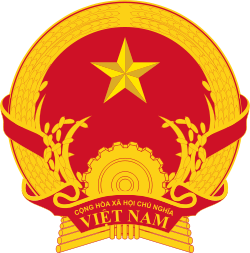Commune-level subdivisions (Vietnam)
In Vietnam, there are three kinds of third-level (commune-level) administrative subdivisions: the rural commune (Vietnamese: xã), the commune-level town (Vietnamese: thị trấn),and the ward (Vietnamese: phường, literal meaning: urban subdistrict). In Vietnam a rural commune is referred to as a xã and urban communes are referred to as Thị trấn, urban townships. However many communities, particularly large urban ones with provincial status, will be divided into wards which are known as phường.
As of December 31, 2008, there were a total of 9,111 communes in Vietnam excluding townships and wards. Each commune may consist of a number of towns and villages but often urban districts are divided into residential neighborhoods or wards which differ from rural communes.
As of December 31, 2009, there were a total of 11,112 commune-level subdivisions in Vietnam including townships and wards. Thanh Hóa Province has the highest number of communes in any province of Vietnam with a total of 637 commune-level subdivisions.[1]
Historical role
During the second republic of the Republic of Vietnam, a communal school district chief would be appointed for each commune. They collaborate with other leaders including the police chiefs, treasurers of the communes, administrative officials, and civil service officials, and form "communal councils" .[2] The council has a number of responsibilities, including monitoring health and education in the commune.
See also
- Rural commune (Vietnam) (Vietnamese: xã)
- Commune-level town (Vietnam) (Vietnamese: thị trấn)
- Ward (Vietnam) (Vietnamese: phường)
- District (Vietnam)
- Province (Vietnam)
References
- ↑ General Statistics Office (Vietnam).
- ↑ Donoghe, John. Cam An: a Fishing Village in Central Vietnam. Saigon: Michigan State University Vietnam Advisory Group, 1961.
